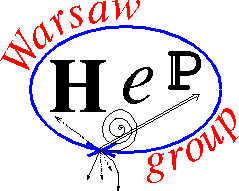SEMINARIUM FIZYKI WIELKICH ENERGII
Dnia 14 stycznia (piątek) o godzinie 10:15, w sali B2.38 odbędzie się
seminarium, na którym zostanie wygłoszony referat pt.:
„The charm of charm, i.e. how the LHCb is looking for new physics in precise measurements of CP violation effects in charm particle decays.”
Referuje: Dr Artur Ukleja
Abstract
The phenomenon of CP violation is one of the least-known part of the Standard Model. Its existence means that the laws of physics change if a particle is replaced by its antiparticle and the directions of all coordinates are changed. The known value of CP violation is too small to explain the existing matter domination over antimatter in the universe. This asymmetry (observed in cosmology) requires much larger value of CP violation than in the Standard Model.
In addition, CP violation phenomenon is related to basic problems of particle physics. Perhaps here is the answer why there are three generations of quarks and leptons. So far, it has been known only that this is the smallest number that allows the introduction of a non-zero weak phase describing CP violation in the Cabibbo–Kobayashi–Maskawa matrix.
Therefore, the main goal of High Energy Physics is a search for new sources of CP violation beyond the Standard Model (called new physics). The measurements in particle decays containing a charm quark create perfect environment for the new physics searches since the background from the Standard Model is small (the expected values of CP violation are about a few per milles or less). On the other hand, very sophisticated research methods are needed to be sensitive for such small effects. The examples of such methods use in the LHCb experiment at CERN I will present during seminar. Their measurements I will show in searches for CP violation in charm particle decays (mesons and baryons). These will be examples of measurements obtained in both two- and three-body decays. Although the three-body processes are always more rare than the two-body processes, they can provide much more information about CP violation. Many observables are available to measure in multi-body processes. In contrast, in two-body processes, only one variable is measured (global result of CP violation).
Serdecznie zapraszamy
dr hab. Katarzyna Grzelak
prof. dr hab. Jan Królikowski
prof. dr hab. Aleksander Filip Żarnecki
High Energy Physics Seminar (14 January 2022) · Indico (cern.ch)

